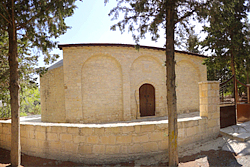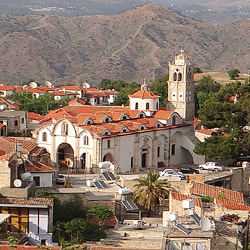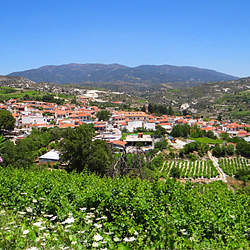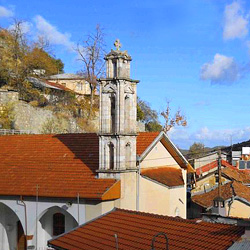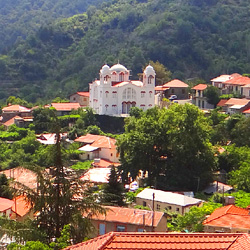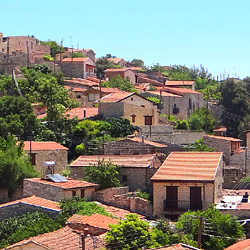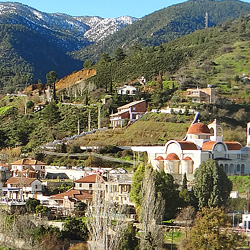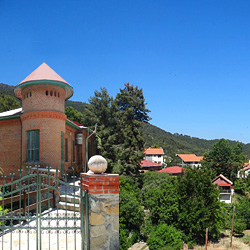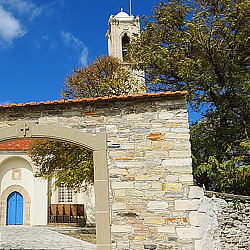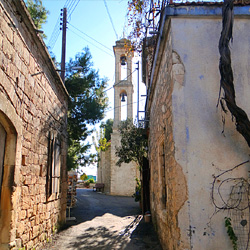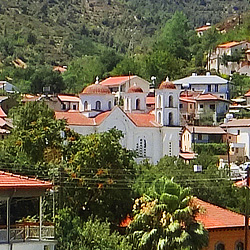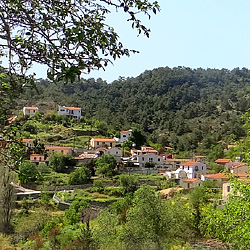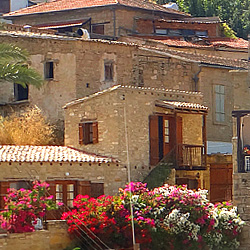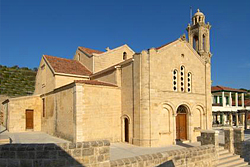
Church Apostolou Philippou
The Church of Apostle Philippos is located in the heart of Arsos. It is a church which was built in the 13th century and which has been repaired several times since then. According to historic evidence presented by Christodoulos Hadjichristodoulou, when Gunnis and Geffery refer to the church of Apostle Philippos in the beginning of the 20th century, they note that there used to be an older church where the present church stands today and that church was destroyed during the second half of the 19th century. The present church has existed ever since the beginning of the 20th century and its dimensions are 72X47 metres. After the big earthquake of 1988, the church was severely damaged, with the built stone revealed from the inside. Due to this incident, the Department of Antiquities, which was asked to offer assistance, declared the church a Monument B’ and helped restore it. Next to the church stands the chapel of Agia Mariamni, the sister of Apostle Philippos. The construction of the bell-tower is dated back to the beginning of the 20th century, while the later addition of the church is the women’s loft. The former was constructed between the years 1912 and 1914, whereas the latter was constructed in 1948. The internal part of the church is adorned by a 19th century wooden iconostasis bearing three lines of portable icons. The first line bears the largest icons which are called ‘Despotic’. Above the Despotic icons there is a line of smaller icons depicting Saints whose name days are considered to be the twelve most important holy days of the Orthodox Church, whereas above those icons there is a line of icons called ‘Apostolikon’, which depict the 12 Apostles. High on the iconostasis one can admire the Crucifixion. Mentioned at the old church of Apostle Philippos is the Russian sightseer and monk Vasileios Barxy, who visited Arsos at the beginning of the 18th century and in particular in 1735. The latter mentions that the church of Apostle Philippos was an old stony church where the relic of the Saint was kept in the sanctuary. The reliquary of the Holy Relic of Saint Philippos was stolen shortly after 1735. Afterwards, following the instructions of the Metropolitan Bishop of Pafos, Ioakeim, the Holy Relic of the Apostle was originally transferred to the Monastery of Agios Ioannis at the location ‘Pente Litharia’, whereas later on it was taken to the Monastery of Timios Stavros in Omodos so that it could be kept and protected. Today, it is still kept at the Monastery of Timios Stavros despite long efforts made by the residents of Arsos for the return of the reliquary and the Holy Relic of the Apostle back to his Church in Arsos. However, it must be noted that the stolen reliquary was replaced around 1770 following instructions given by Metropolitan Bishop Panaretos. The Holy Relic, as Hadjichristodoulou remarks, was destructive for locust. Hence, during locust raids, the residents would perform litanies at the distressed areas in order to protect their harvest. The relic of Apostle Philippos was probably transferred to Cyprus during the Frankish Period. The transfer of the relic is celebrated by the Church of Cyprus with a special mass on the 31st of July. When the holy relic of the Saint arrived in Cyprus, it was kept in various areas of Pafos. However, for safety reasons, the relic was transferred towards the inland and more specifically to Arsos, where an imposing church was built to honour the Saint. The church’s inauguration ceremony was performed by the Latin land owner of the area named Jernizos. Kept at the imposing stony church of the Apostle is the icon of Saint Philippos, the dimensions of which are 150X108X55 cm, which was painted around the first half of the 13th century. Depicted on a slightly elevated frame surrounding the icon are 18 scenes from the life of the Saint accompanied by inscriptions. The name day of Apostle Philippos, the Protector Saint of our community, is celebrated on the 14th of November. A fair takes place at the square of the village, where street vendors set their stands and sell their products to both the villagers and the worshippers who come from all over Cyprus to worship the miracle-making icons of Apostle Philippos.

